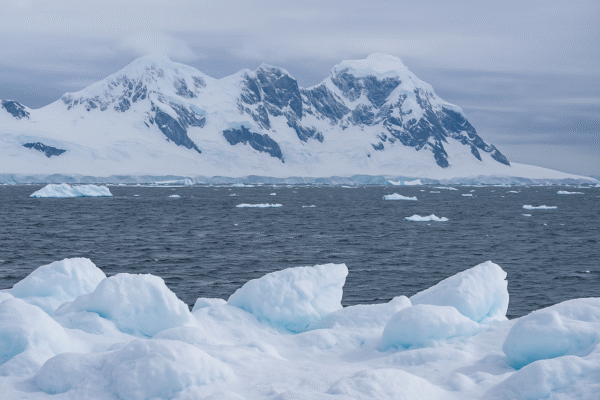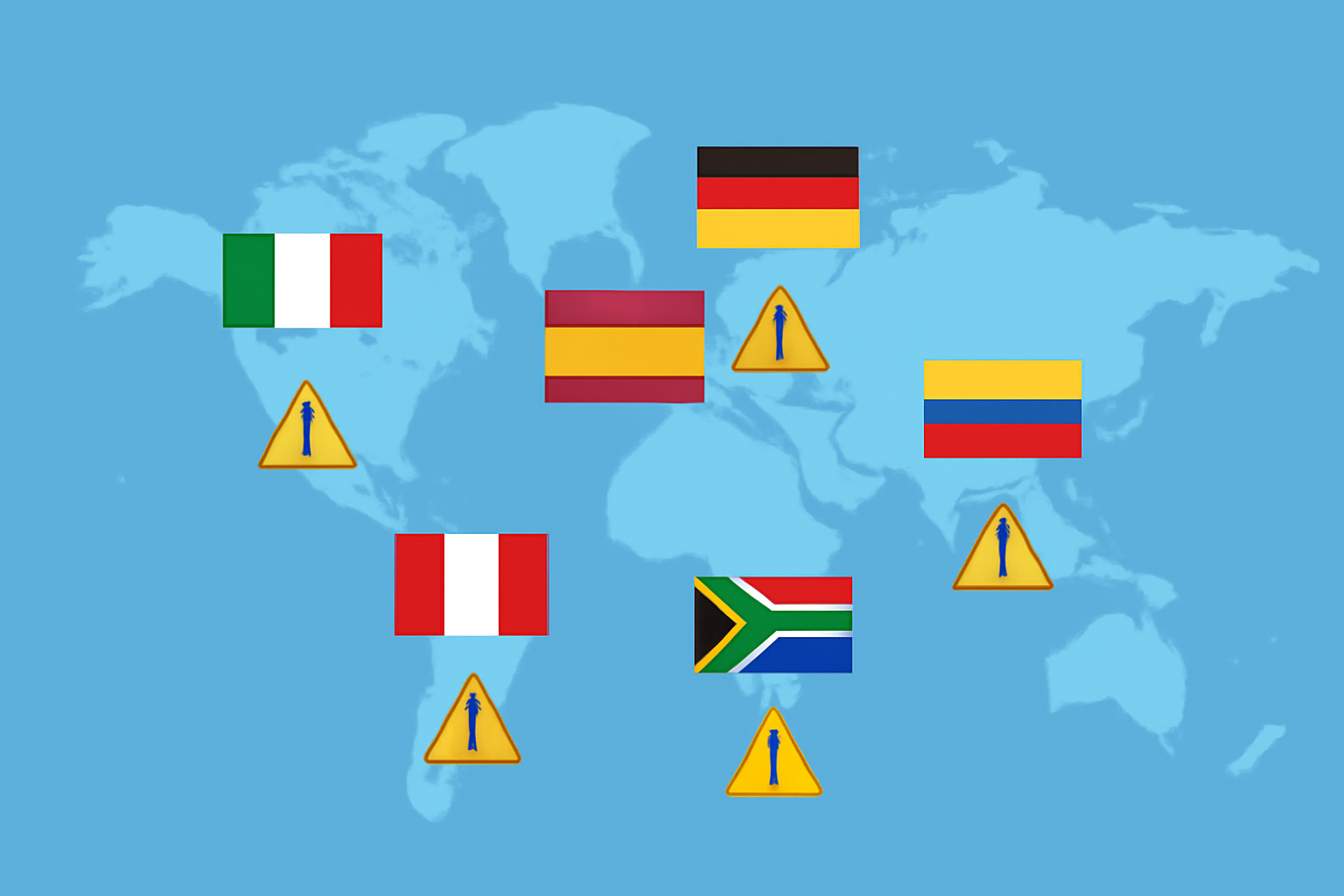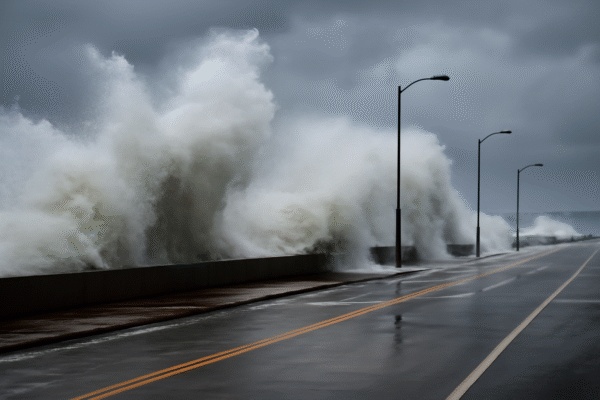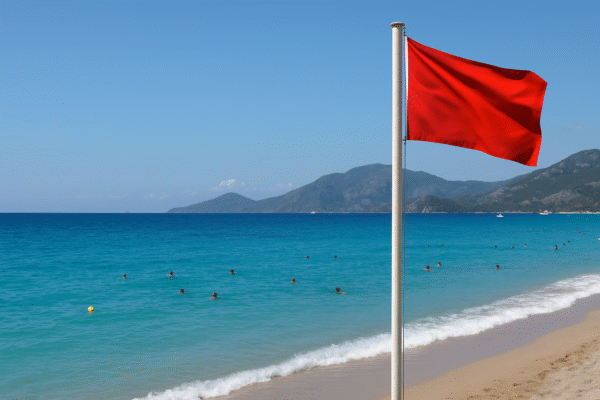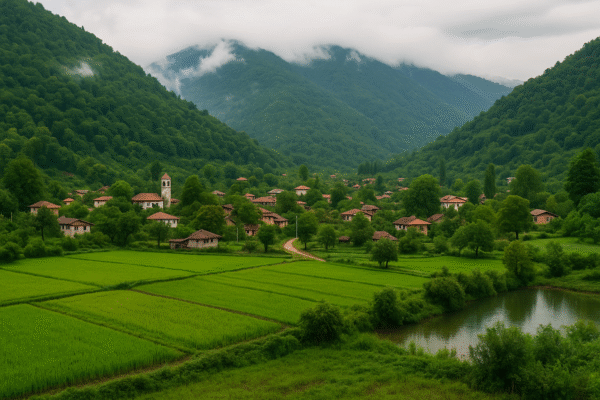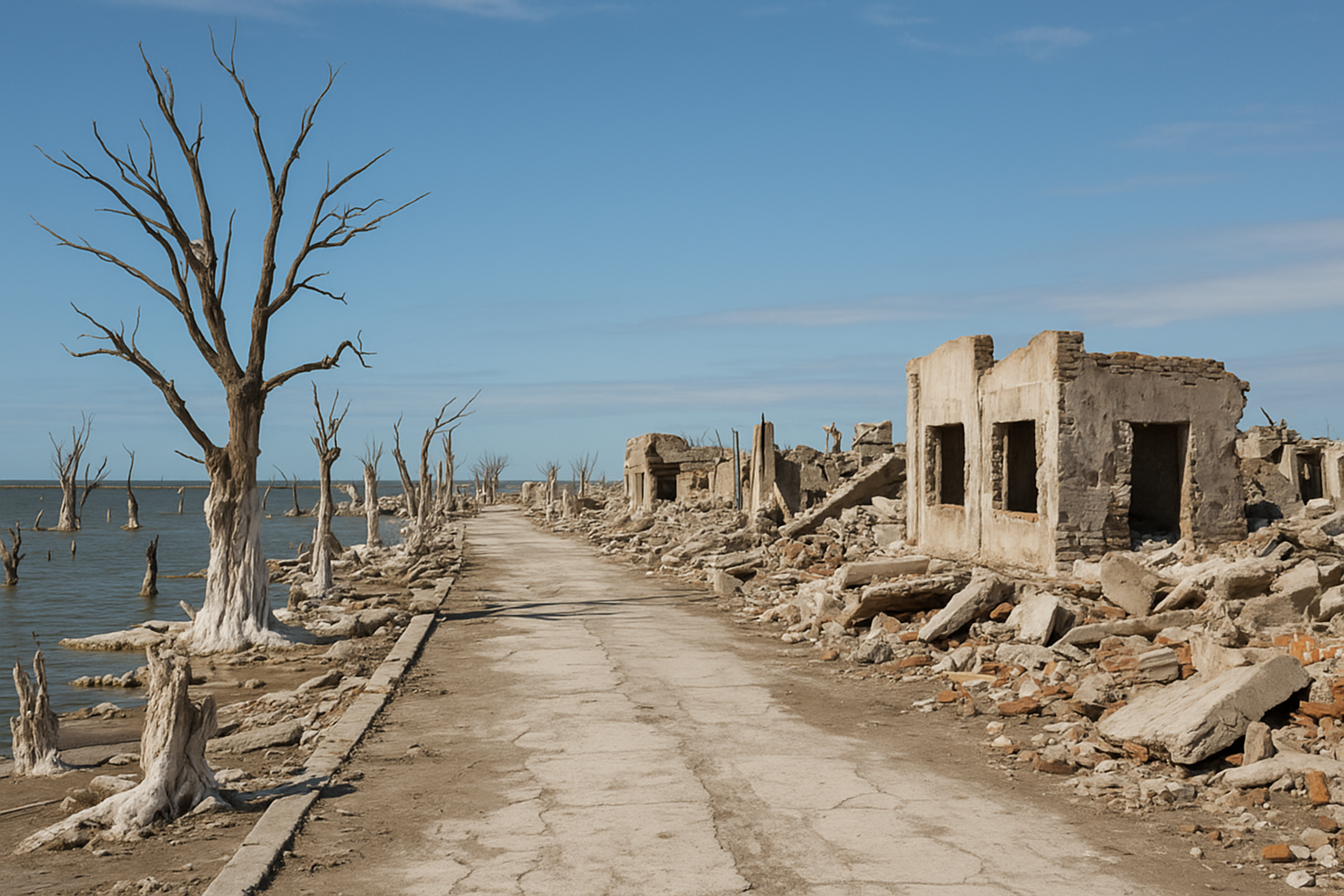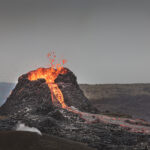Once one of Argentina’s most iconic health tourism destinations, Villa Epecuén now exists as a ghostly relic of its former self. Located just 7 kilometers (4 miles) from the City of Carhué in the Buenos Aires Province, this now-abandoned lakeside resort was once a thriving wellness retreat famed for the therapeutic properties of its saltwater lake. Today, partially uncovered from decades under water, Villa Epecuén invites curious travelers, photographers, and historians to experience the haunting beauty of a town swallowed—and later surrendered—by nature.
A Thriving Spa Town of the 20th Century
Founded in 1921 along the saline Lake Epecuén, the town quickly gained fame for the lake’s high salt content, which was believed to offer healing benefits similar to the Dead Sea. Travelers from Buenos Aires and beyond flocked to Villa Epecuén via railway to indulge in therapeutic mud treatments and salt baths. The town supported over 280 businesses at its peak, including hotels, guesthouses, restaurants, and souvenir shops. With a permanent population of around 1,500, the town welcomed approximately 25,000 tourists every summer between November and March.
The local government actively promoted Villa Epecuén as a wellness destination, and by the 1970s, it had become a household name in Argentina’s domestic tourism scene. The salt concentration in Lake Epecuén is ten times higher than in the ocean, allowing swimmers to float effortlessly and luring in those suffering from arthritis and skin conditions.
The Devastating Flood of 1985
Villa Epecuén’s prosperous run came to a tragic halt on November 6, 1985. A rare weather event caused a seiche—a standing wave phenomenon that occurs in enclosed or partially enclosed bodies of water—to break through a protective embankment. The failure of the dam system allowed Lake Epecuén to begin flooding the town. By 1993, the water level had risen 10 meters (over 30 feet), submerging the entire resort and rendering it permanently uninhabitable.
The sudden disappearance of the town forced all residents to evacuate, abandoning their homes, businesses, and memories. Salt crystallized over the years on the submerged buildings, preserving the skeletal remains of structures beneath the lake’s harsh waters.
The Ghost Town Reemerges
In a turn of fate, the waters began to recede in 2009, slowly revealing the ruined infrastructure of Villa Epecuén. Roads, collapsed buildings, and public monuments emerged coated in a white crust of salt, eerily preserved by the lake’s mineral content. The haunting sight of twisted trees, rusting swing sets, and crumbling walls now paints a powerful contrast between nature’s reclamation and humanity’s fragility.
The site has since become a magnet for alternative tourism, attracting adventurers and urban explorers. Drone photographers and documentary filmmakers have helped the world rediscover Villa Epecuén, showcasing its eerily beautiful decay in films, social media, and travel blogs.
Pablo Novak: The Town’s Final Resident
One of the most emotional elements in the story of Villa Epecuén is the return of Pablo Novak. Born in 1930 and a lifelong resident until the flood, Novak returned to the town after the waters receded. Refusing to let go of his past, he lived among the ruins in a modest stone house without electricity or running water.
His story gained global attention through the 2013 documentary Pablo’s Villa, which highlighted his daily life among the salt-covered wreckage. Novak became the unofficial guardian of the ghost town, receiving the occasional tourist and answering questions about its tragic past. He remained the town’s sole inhabitant until his passing in January 2024 at the age of 93.
Tourism Amid Tragedy
While Villa Epecuén will never return to its former glory, it has found a new identity as a site of dark tourism. Managed by the Municipality of Adolfo Alsina, the area now allows limited visits. Tourists can walk through designated paths and view interpretive panels that explain the town’s history, geological events, and the salt lake’s unique chemical composition.
The ghost town offers a rare look into the long-term effects of climate change and infrastructure failure, making it a point of interest not only for travelers but also for environmental scientists and historians. It serves as a cautionary tale of nature’s force and a poignant reflection on impermanence.
How to Visit Villa Epecuén
Visitors can access Villa Epecuén from the nearby town of Carhué, which has accommodations, restaurants, and information centers. The site is about 520 kilometers southwest of Buenos Aires and can be reached by car or bus in around six hours. While entry is free, visitors are advised to respect signage and avoid climbing or disturbing the fragile ruins.
The best time to visit is during the Argentine spring and summer months (October to March), when weather conditions are ideal for exploration. Travelers should wear sun protection, sturdy footwear, and bring plenty of water, as the exposed salt flats can intensify sunlight and heat.
Conclusion: A Timeless Reminder of Nature’s Power
Villa Epecuén stands today not just as a tourist site but as a moving reminder of the delicate balance between human development and the natural world. From a booming wellness resort to a submerged ghost town and now a surreal ruin, its story speaks to the power of nature, the endurance of memory, and the strange beauty that emerges from devastation.
Whether you are drawn by its history, its visual intrigue, or its symbolic message, a visit to Villa Epecuén is a journey into the heart of Argentina’s forgotten past—one that continues to echo through salt and silence.
For more travel news like this, keep reading Global Travel Wire



